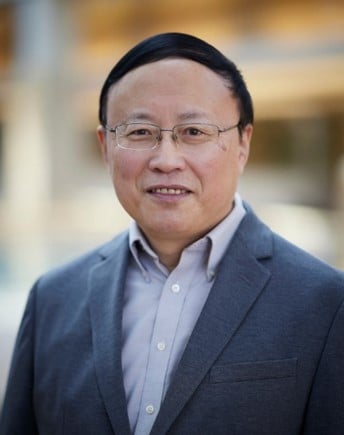Need Help?
9 December 2022
Interview with Prof. Dr. Bin Zheng—Editorial Board Member of Bioengineering
|
|
Name: Prof. Dr. Bin Zheng Email: bin.zheng-1@ou.edu Role: Editorial Board Member of Bioengineering |
Prof. Dr. Zheng works as a Professor at the School of Electrical and Computer Engineering, University of Oklahoma, Norman, USA. We hope you enjoy the interview.
- What are your research areas?
Medical imaging informatics, computer-aided diagnosis of medical images, machine learning and artificial intelligence.
- What are the latest developments in your research field?
In the last several years, my medical imaging research laboratory in the School of Electrical and Computer Engineering, the University of Oklahoma, has been working on several research projects that aim to identify new quantitative imaging (QI) markers and develop novel machine learning (ML)-based prediction models. These research efforts include using the QI features computed from: (1) digital mammograms to predict short-term breast cancer risk and classify between malignant and benign lesions; (2) dynamic-contrast-enhanced breast magnetic resonance images (DCE-MRI) to predict the response of breast cancer patients to neoadjuvant chemotherapy; (3) lung computed tomography (CT) images to predict the risk of cancer recurrence in early stage non-small-cell lung cancer patients after surgery; (4) abdominal CT images to predict the 6-month progression-free survival (PFS) of ovarian cancer patients undergoing clinical trials for testing new chemotherapy drugs; (5) abdominal CT images to predict the metastasis status of gastric cancer patients; and (6) brain CT and/or MR images to predict the prognosis of aneurysmal subarachnoid hemorrhage and acute ischemic stroke patients or detect/assess residual brain tumor tissue after surgery. In our studies, we have also applied and tested many new deep-learning-based artificial intelligence (AI) models combined with interactive graphical user interface (GUI) tools to facilitate our research work effort and support physician scientists in conducting translational clinical studies or research projects.
- Can you briefly share your career development story? For example, what cases have influenced you the most?
I was originally educated and trained as an Optical Engineer in my undergraduate and graduate studies to develop and apply optimal or laser-based imaging technology and systems in engineering. After I received my Ph.D. from the Department of Electrical Engineering, University of Delaware, I accepted a postdoc training position in the Medical Imaging Research Division, Department of Radiology, University of Pittsburgh. I worked on a research task that aimed to modify optical imaging components in a new investigative computed radiology (CR) system for breast cancer imaging. After completing this task, the director of Medical Imaging Research Division, Dr. David Gur, introduced and encouraged me to enter a completely new research field of developing computer-aided detection (CAD) schemes of mammograms. I accepted this challenge and started to develop a new CAD scheme based on my master’s thesis work on applying optical theodolites to perform topographic measurement. I published my first CAD research paper entitled “Computerized detection of masses in digitized mammograms using single image segmentation and a multi-layer topographic feature analysis” (Academic Radiology 1995; 2:959–966). Since then, I have been working in the CAD research field for more than 28 years and gradually expanded my CAD research from breast cancer detection to much broader topics and different types of cancer (i.e., breast, lung, ovarian, gastro, leukemia) and strokes, including the prediction of disease risk, the classification of lesion types, and improvement in treatment efficacy. Thus, based on my unique career development experience, I always believe in and promote interdisciplinary research to use and apply complementary knowledge and skills from different fields, which can help generate more novel research ideas and approaches.
- Do you have any valuable suggestions you would like to share with young students and early career researchers?
I am lucky to have had an outstanding mentor, Dr. David Gur, in my early academic career development. Dr. Gur provided me important guidance and great support that encouraged me to try new research ideas, identify research topics with higher translational impact, propose novel study hypotheses, learn lessons from failures, and improve my skills in writing research papers and proposals. Thus, to develop a successful research career, I always provide advice or suggestions to my students that one should have passion and dedication to the research work, keep trying from the failures, and gradually broaden their research vision by absorbing and fusing the knowledge and skills learned from multidisciplinary fields.
- What do you think of the development of Open Access in publishing?
I agree that Open Access publishing provides an excellent platform to effectively promote and exchange new research ideas. It can help disseminate new research methods and results in more broad research communities in multidisciplinary fields.
We are thankful for Dr. Zheng's time and his support for Bioengineering.


